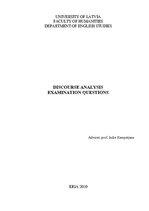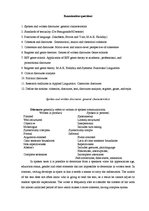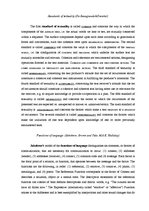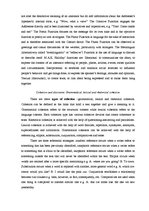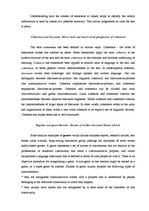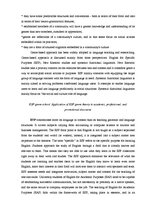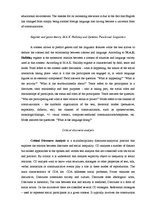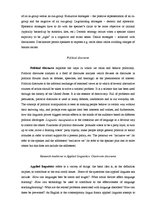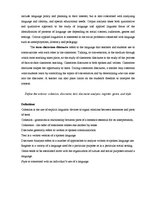-
Discourse Analysis LU Exam Questions
Research traditions in Applied Linguistics. Classroom discourse
Applied linguistics refers to a variety of things: the basic idea is, as the definition implies, to contribute to the real-world issues. Some of the questions that applied linguists ask include: -How can languages best be learnt and taught? -What social factors affect language learning? -How can technology be used to contribute to the effectiveness of language teaching/learning? -What are the related problems associated with language disorders? How can these be prevented? As English is the contemporary lingua franca applied linguists attempt to include language policy and planning in their interest, but is also concerned with analyzing language and identity, and special educational needs. Corpus analysis takes both quantitative and qualitative approach to the study of language and applied linguists focus of the identification of patterns of language use depending on social context, audiences, genres and settings. Critical applied linguistics is interested in the social problems connected with language such as unemployment, illiteracy and pedagogy.
The term classroom discourse refers to the language that teachers and students use to communicate with each other in the classroom. Talking, or conversation, is the medium through which most teaching takes place, so the study of classroom discourse is the study of the process of face-to-face classroom teaching. Classroom discourse is both spoken and written. Classroom discourse shapes the opportunity to learn. During classroom discourse, a teacher may constrain what students learn by controlling the topics of conversation and by determining who can enter into the discourse. A teacher can also place limits on the student's freedom to interpret the content.
…
1. Spoken and written discourse: general characteristics 2. Standards of textuality (De Beaugrande&Dressler) 3. Functions of language. (Jakobson; Brown and Yule, M.A.K. Halliday) 4. Cohesion and discourse. Grammatical, lexical and rhetorical cohesion 5. Coherence and discourse. Micro-level and macro-level perspective of coherence 6. Register and genre theories. Genres of written discourse.Genre schools 7. ESP genre school. Application of ESP genre theory to academic, professional, and promotional discourse 8. Register and genre theory. M.A.K. Halliday and Systemic Functional Linguistics 9. Critical discourse analysis 10. Political discourse. 11. Research traditions in Applied Linguistics. Classroom discourse 12. Define the notions: cohesion, discourse, text, discourse analysis, register, genre, and style.

